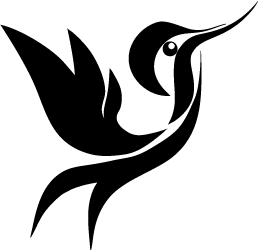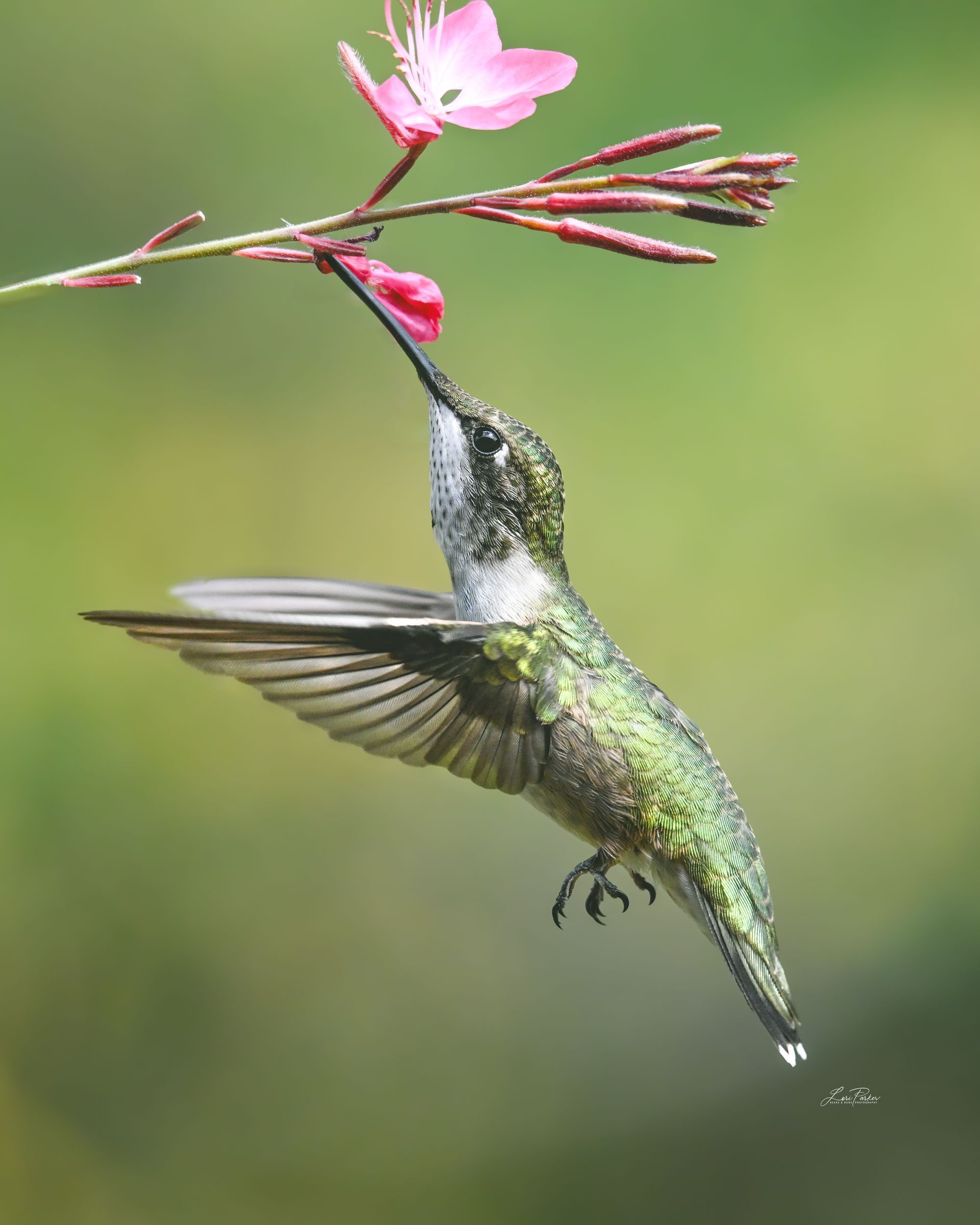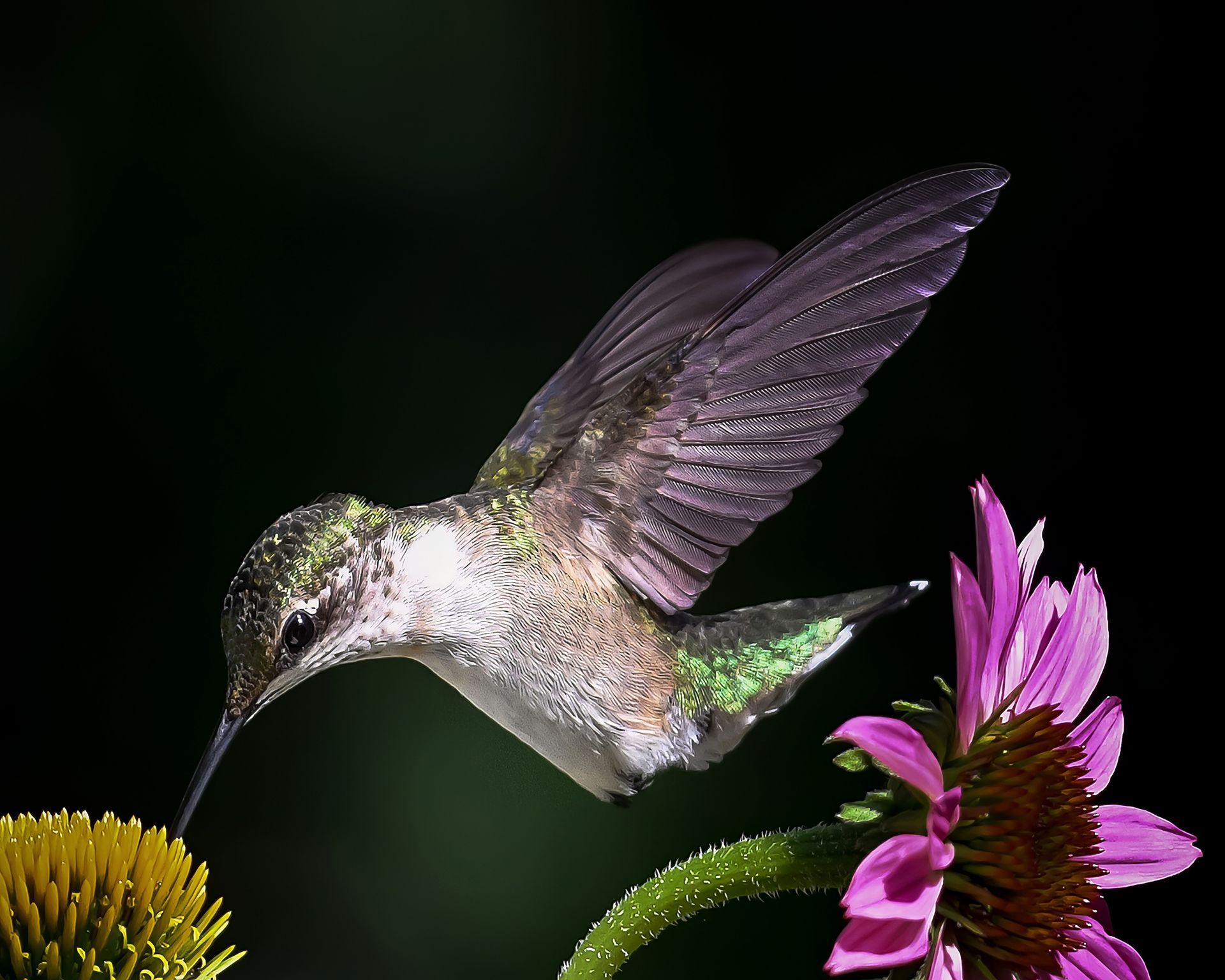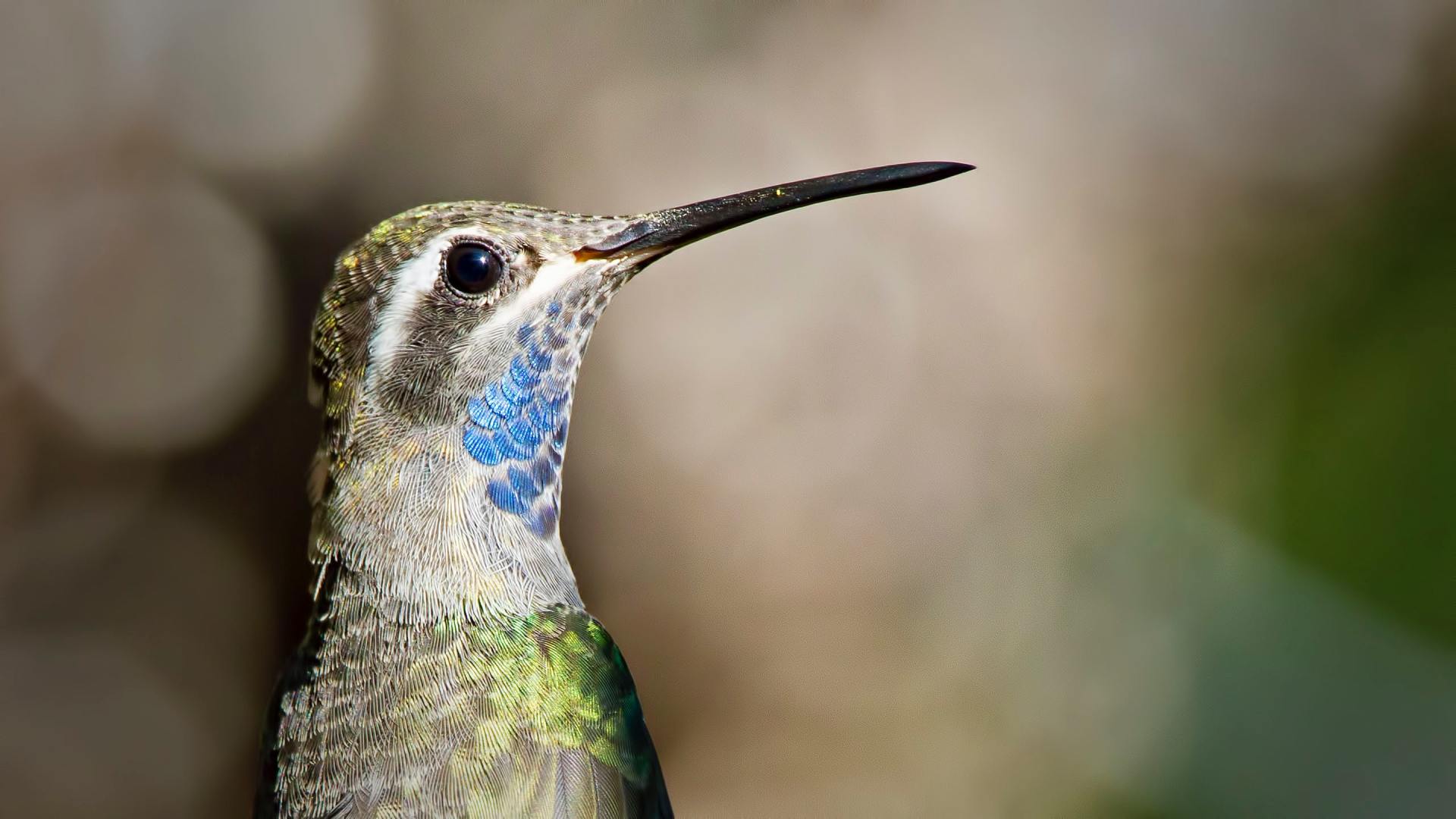Hummingbirds are the smallest known bird, with over 300 unique species. The smallest is only 2.25 inches (57.15 mm) long.
These little birds must eat five to seven times PER HOUR to remain alive. Hummingbirds also eat insects and tree sap, depending on species.
While at rest, Hummingbirds take about 250 breaths per minute; their heart beats about 1200 times per minute. At night, Hummingbirds go into a deep hibernation-like state called "torpor," so that eating at night is not necessary. During torpor, hummingbirds save about 60% of their total energy and lower their metabolism by as much as 95%. Their heart rate slows from 1,200 beats per minute to fewer than 50 beats per minute; their body temperature can drop from 40°C (104°F) to 18°C (65°F)--near hypothermic. They can also be found hanging upside down during torpor. As soon as they awake, which can take 20 minutes to an hour, they consume 1/4 of their daily intake of food.
Despite their small size, Hummingbirds are one of the most aggressive bird species. They will regularly attack jays, crows, and hawks that infringe on their territory. Hummingbird habitats, such as your backyard, often have one dominant Hummingbird that guards all the feeders, chasing intruders away.
How to Help
Provide a habitat in your yard, porch, or balcony. Do this by setting up feeders and setting out some natural flowering plants near the feeders.
Hummingbirds are attracted to any brightly-colored, nectar-producing flowers, but seem to favor red flowers. More than one feeder is best. Placing another feeder a distance from your dwelling will help attract the Hummingbirds.
Fill the feeders with sugar water, made by thoroughly mixing 1 cup of sugar and 32-ounces of water. Do not use food coloring—your feeder should have red areas to attract the Hummingbirds.
If you live in an area where mornings are cool or cold, use feeders without perches, or bring in the feeders overnight so the water will be warm in the morning. When Hummingbirds sit and eat very cold sugar water, they may become hypothermic. The work of hovering heats their muscles, preventing this.
Clean your feeder often to prevent bacteria and fungus from growing in the sugar water, and to prevent the water from fermenting.
The following are the biggest dangers to Hummingbirds:
- Big, refective picture windows--a danger to all birds
- Deforestation of wintering and breeding grounds, and migratory routes
- Lack of food for their annual migratory journey. The peak fall migration period for hummingbirds is from mid-July through August or early September, depending on the route and the species. Species that nest further north generally begin migration earlier. Hummingbirds need to fatten up to nearly double their normal body weight to survive the journey. Keep your feeder up and filled until you are sure they have moved out of the area.
- Pesticides--do not use these around the birds or their habitat.
- Bad storms--a danger to all birds.
List of Services
-
List Item 1 Write a description for this list item and include information that will interest site visitors. For example, you may want to describe a team member's experience, what makes a product special, or a unique service that you offer.
List Item 1 -
List Item 2 Write a description for this list item and include information that will interest site visitors. For example, you may want to describe a team member's experience, what makes a product special, or a unique service that you offer.
List Item 2 -
List Item 3 Write a description for this list item and include information that will interest site visitors. For example, you may want to describe a team member's experience, what makes a product special, or a unique service that you offer.
List Item 3 -
List Item 4 Write a description for this list item and include information that will interest site visitors. For example, you may want to describe a team member's experience, what makes a product special, or a unique service that you offer.
List Item 4 -
New List Item Write a description for this list item and include information that will interest site visitors. For example, you may want to describe a team member's experience, what makes a product special, or a unique service that you offer.





